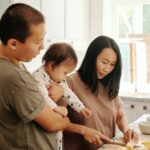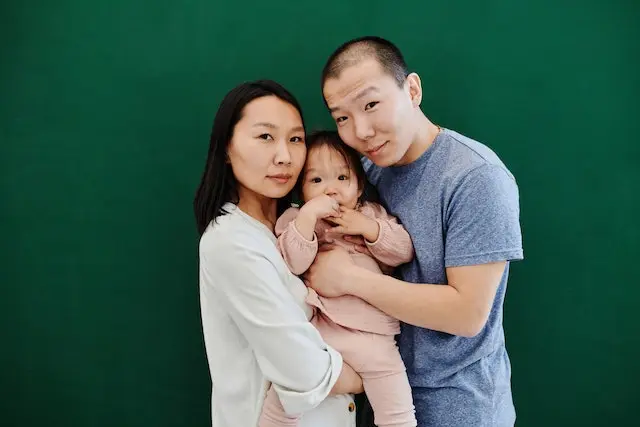What are the typical family structures in Singapore?
Welcome to our blog post on the vibrant topic of family structures in Singapore!
A multicultural melting pot, this city-state is home to a multitude of family arrangements that merge traditional values with modern influences. From the classic nuclear family to uncommon varieties such as single-parent and blended families, this post will provide insight into this incredible variety of family structures in Singapore.
Ready for an exploration?
4 Traditional Family Structures in Singapore
Let’s learn how these diverse families work together and succeed in Singapore!
1. The Nuclear Family
The Nuclear Family, the cornerstone of many societies around the world, is also a prevalent family structure in Singapore. In this traditional arrangement, a married couple and their children form a tight-knit unit that typically resides under one roof.
Role of Parents
In Singaporean culture, the nuclear family often consists of two parents and their biological or adopted children. They share responsibilities such as raising children, managing household tasks, and making key decisions together.
Reasons for Prevalence in modern Singapore
One reason for the popularity of the nuclear family in Singapore is its effectiveness in providing stability and emotional support to its members. With both parents actively involved in nurturing their children’s growth and development, this structure promotes strong familial bonds.
Moreover, this family structure allows for greater flexibility when it comes to decision-making processes. As there are fewer individuals involved compared to extended families or other arrangements, it can facilitate smoother communication and quicker problem-solving.
It’s important to note that while the nuclear family remains a common family structure in Singaporean society today, societal shifts have led to variations within this framework.
Dual-income households have become more prevalent as women continue to make strides professionally. Additionally, some couples opt for smaller families or choose not to have children at all due to personal preferences or other factors.
2. The Extended Family Structure in Singapore
The Extended Family is a common and cherished family structure in Singapore. In this type of family, multiple generations live together under one roof or in close proximity. It’s not uncommon to find grandparents, parents, and children all sharing the same household.
Support system and intergenerational ties
This arrangement brings many benefits. It fosters strong bonds among family members as they interact on a daily basis.
Grandparents can pass down wisdom and traditions to their grandchildren, creating a sense of continuity and cultural heritage.
Moreover, having an extended support network is invaluable when it comes to raising children. Parents can rely on their own parents for help with childcare duties or seek guidance from experienced elders.
Establishing positive relationships with grandchildren not only brings satisfaction to grandparents but also provides opportunities for emotional integration during their later life development, moving away from self-absorption.
Financial benefits and emotional support
Financially speaking, the Extended Family also offers advantages. Pooling resources allows families to share expenses such as rent or mortgage payments, utilities, groceries, and other living costs.
The Extended Family structure provides emotional support and practical assistance that strengthens familial ties. It promotes shared responsibilities and creates an environment where everyone feels loved and cared for without burdening any single individual excessively.
3. The Single-Parent Family

In Singapore, the single-parent family is becoming increasingly common. This type of family structure consists of one parent raising their child or children without a partner.
Factors contributing to the rise of single-parent households
There are various reasons why someone may become a single parent. It could be due to divorce, separation, the death of a spouse, or even by choice. Regardless of the circumstances, being a single parent comes with its own unique set of challenges and responsibilities.
Challenges and resilience of single-parent families
One challenge for single parents is balancing work and parenting, requiring them to take on multiple roles for their children’s well-being.
Financial stability is also a concern, given the high cost of living in Singapore. Seeking support from government programs or extended family can be necessary.
Despite challenges, many single-parent families in Singapore thrive through determination and love. They develop strong parent-child bonds while navigating life together.
Recognizing and supporting single-parent families is crucial. Affordable childcare, financial aid, and emotional support networks can ease their burdens.
4. The Blended Family Structure in Singapore
Another common family structure in Singapore is the blended family. This type of family occurs when two individuals with children from previous relationships come together to form a new family unit. It can be a result of divorce, separation, or the death of a spouse.
Navigating relationships with step-children and step-relatives
Blending families brings unique challenges and growth opportunities. Children adjust to new siblings and stepparents, while parents navigate co-parenting with ex-partners.
Communication is vital for strong relationships. Harmonious dynamics come from understanding, respect, and love, creating new traditions and shared activities.
Unity and support matter most. A safe, nurturing environment where everyone feels heard and valued fosters thriving blended families despite initial difficulties.
Each blended family is unique; no one-size-fits-all approach exists. Flexibility, patience, and genuine care are key to navigating diverse backgrounds into one cohesive unit.
Cultural Diversity in Family Structures in Singapore

Chinese Singaporean Families
Chinese Singaporean families strongly uphold traditional Confucian values and filial piety. Respect for elders and a sense of duty towards one’s parents are deeply ingrained in their family structure. However, modern influences have brought about adaptations, with younger generations balancing tradition with contemporary lifestyles.
Malay Singaporean Families
Islamic culture significantly influences family dynamics in Malay Singaporean households. Strong emphasis is placed on the importance of extended family bonds and communal support. During significant life events, such as weddings and religious celebrations, these bonds are further reinforced, creating a sense of unity and belonging.
Indian Singaporean Families
Indian Singaporean families value the strength of extended family and community ties. The family structure is extended beyond immediate relatives, with cousins, aunts, and uncles playing integral roles. Cultural traditions, such as elaborate wedding ceremonies and festivals, are meticulously preserved, fostering a rich sense of heritage.
Eurasian and Other Ethnicities
Eurasian and other ethnic groups in Singapore exhibit unique family dynamics and traditions that reflect their diverse cultural backgrounds. Embracing the country’s multicultural environment, these families blend customs and practices, enriching the social fabric of Singapore.
Government Policies and Family Support

Pro-family initiatives
The Singaporean government actively promotes pro-family policies aimed at fostering a conducive environment for family development. Government-paid Shared Parental Leave (SPL) and work-life balance policies enable parents to spend quality time with their families while maintaining a career. Additionally, housing and family planning schemes offer practical support to families, ensuring a stable foundation for their growth.
I cannot forget to mention the three-child policy. The government implemented a targeted pro-natalist policy, offering tax incentives to highly educated women with three or more children, while providing cash incentives to women with lower levels of education who chose to have no more than two children. This approach aimed to encourage specific population groups to have more children and maintain demographic balance.
Childcare and Education
Singapore places great importance on providing accessible and affordable childcare services. Parents have access to a range of options, from government-subsidized child care centers to privately-run facilities. Families with Singapore Citizen children attending licensed childcare centers are eligible for a Basic Subsidy of up to $600 per month for full-day infant care and up to $300 per month for full-day childcare.
Moreover, the country is committed to providing quality education and lifelong learning opportunities, ensuring that children have a solid educational foundation for their future.
Conclusion
In conclusion, let us celebrate the diversity within our families while recognizing that they are all united by love—the cornerstone upon which strong families are built—no matter their shape or size.









